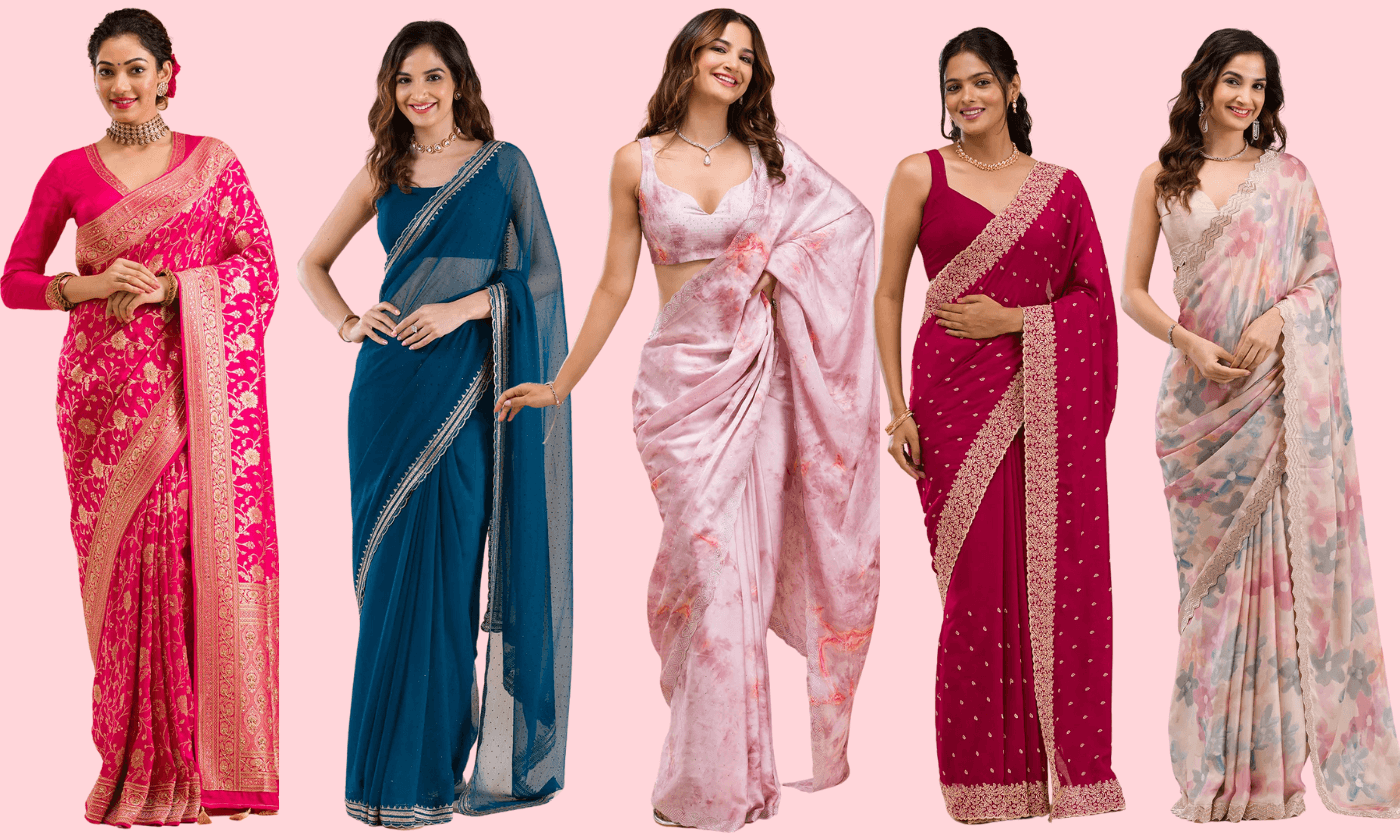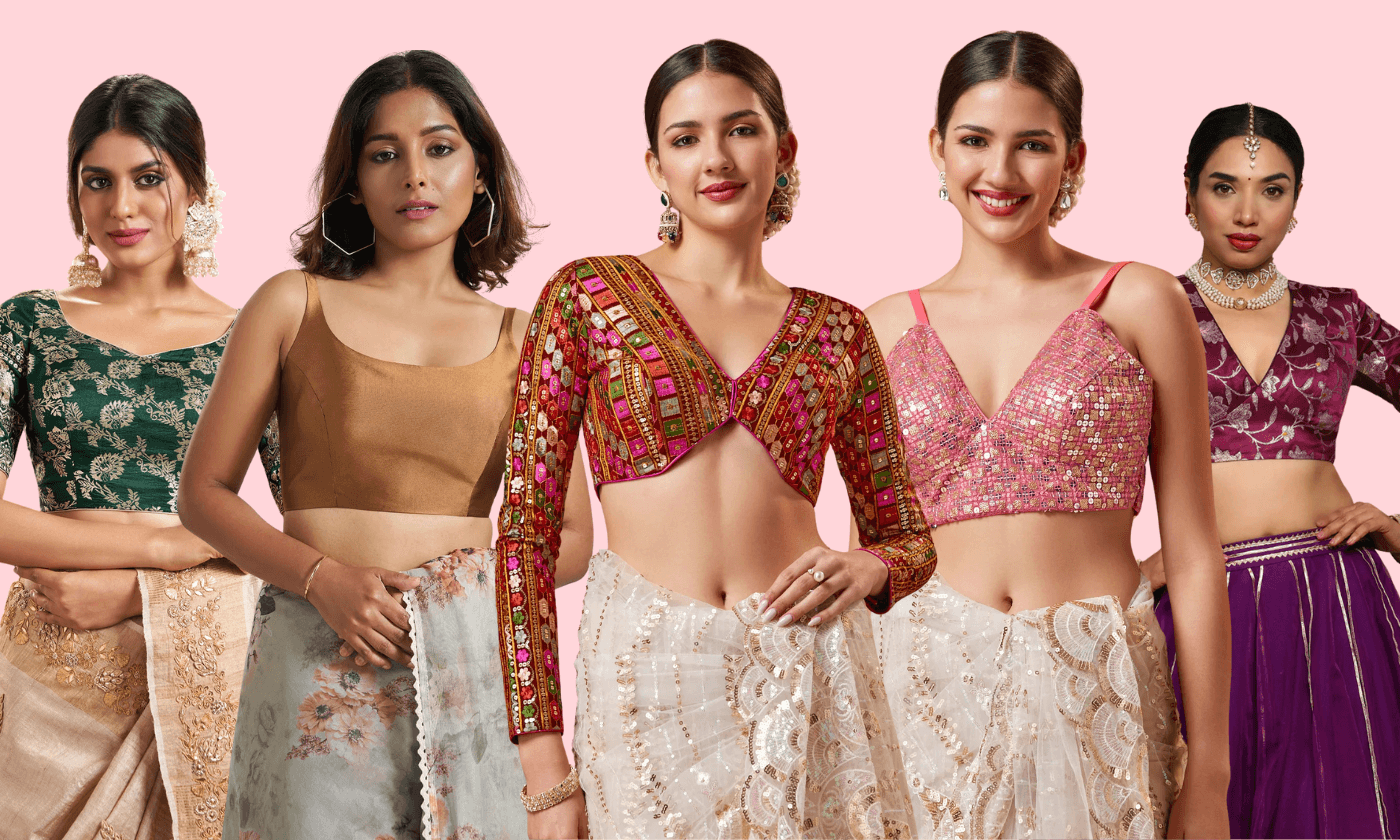Article: Types of Sarees Across India: A Journey Through Tradition and Elegance

Types of Sarees Across India: A Journey Through Tradition and Elegance
Sarees are more than just garments—they are a reflection of India’s rich cultural heritage, artistry, and regional diversity. Each state in India brings its unique touch to this timeless attire, blending intricate weaving techniques, vibrant dyes, and traditional motifs. From the handwoven elegance of Banarasi silk to the earthy charm of cotton Jamdani, let’s explore the most iconic types of sarees across India.
1. Banarasi Saree (Uttar Pradesh)
The Banarasi saree from Varanasi is synonymous with luxury and opulence. Woven from fine silk, these sarees are adorned with intricate zari work (gold and silver threads) and elaborate patterns inspired by Mughal art. Banarasi sarees are often worn by brides and are passed down through generations as treasured heirlooms.
2. Kanjeevaram Saree (Tamil Nadu)
The Kanjeevaram saree, hailing from Tamil Nadu, is known for its rich texture and contrasting borders. Crafted from pure mulberry silk, these sarees feature motifs inspired by temples, peacocks, and mythological stories. The gold-dipped zari adds a regal touch, making them perfect for weddings and festive occasions.
3. Patola Saree (Gujarat)
Patola sarees are double ikat weaves, making them one of the most intricate and expensive sarees in India. The dyeing and weaving process involves complex mathematical precision, resulting in striking geometric patterns and vibrant colors. Patola sarees are often considered symbols of wealth and status.
4. Bandhani Saree (Gujarat and Rajasthan)
Bandhani sarees are created using the tie-and-dye technique, where small portions of the fabric are tied with threads and then dyed in vibrant colors. The result is a beautiful pattern of dots, swirls, and waves. Bandhani sarees are bright, colorful, and widely worn during festivals and celebrations.
5. Chanderi Saree (Madhya Pradesh)
Chanderi sarees are known for their sheer texture and lightweight feel. Woven from silk and cotton, these sarees are decorated with delicate gold and silver motifs inspired by nature. The lightness of Chanderi sarees makes them ideal for summer wear and daytime events.
6. Tant Saree (West Bengal)
Tant sarees are crisp cotton sarees, perfect for the hot and humid climate of Bengal. They are characterized by their broad, decorative borders and light body. The comfort and elegance of Tant sarees make them a popular choice for daily wear and cultural events.
7. Jamdani Saree (West Bengal)
Jamdani sarees are handwoven masterpieces known for their intricate floral and geometric patterns. Woven from fine cotton, they have a soft, muslin-like texture. Jamdani weaving is a labor-intensive process, but the result is a saree that drapes like a dream.
8. Paithani Saree (Maharashtra)
Paithani sarees are defined by their luxurious silk fabric and vibrant colors. The hallmark of a Paithani is its peacock motifs and the rich pallu (end piece) featuring detailed gold and silver zari work. These sarees are a treasured part of Maharashtrian bridal trousseaus.
9. Mysore Silk Saree (Karnataka)
Mysore silk sarees are known for their smooth texture and vibrant color palette. Woven from pure silk and enhanced with gold zari borders, these sarees exude understated elegance. Mysore silk sarees are perfect for both formal and festive wear.
10. Kasavu Saree (Kerala)
Kasavu sarees are simple yet elegant white sarees with golden borders. Traditionally worn during Onam and weddings, they are a symbol of purity and grace. The minimalistic style of Kasavu sarees reflects the cultural heritage of Kerala.
11. Pochampally Saree (Telangana)
Pochampally sarees are ikat-woven sarees characterized by symmetrical patterns and vibrant colors. The dyeing process involves precision to create the characteristic blurred edges of ikat designs. Pochampally sarees are lightweight and ideal for festive and casual wear.
12. Bhagalpuri Silk Saree (Bihar)
Bhagalpuri silk sarees are known for their rich texture and natural sheen. Made from Tussar silk, these sarees have earthy tones and often feature tribal motifs. They are versatile and can be styled for both formal and traditional events.
13. Kota Doria Saree (Rajasthan)
Kota Doria sarees are lightweight cotton sarees known for their square-check patterns. The unique weaving technique gives them a crisp yet breathable feel, making them perfect for summer wear.
14. Assam Silk Saree (Assam)
Assam silk sarees, including the famous Muga silk sarees, are prized for their durability and natural golden luster. They feature intricate motifs inspired by nature and Assamese culture. Assam silk sarees are often worn during weddings and cultural celebrations.
15. Phulkari Saree (Punjab)
Phulkari sarees are adorned with vibrant, hand-embroidered floral patterns. The use of bright threads on a cotton or georgette base creates eye-catching designs. Phulkari work is a symbol of Punjabi culture and is often worn during festivals and weddings.
Conclusion
The saree is not just a piece of fabric; it is a story of India’s rich heritage, craftsmanship, and artistic expression. Each type of saree reflects the unique identity of its region, blending tradition with timeless elegance. Whether you seek the regal charm of a Banarasi or the earthy allure of a Tant, there’s a saree for every occasion and every mood. Draping a saree is not just about fashion—it’s about embracing a piece of India’s soul.
